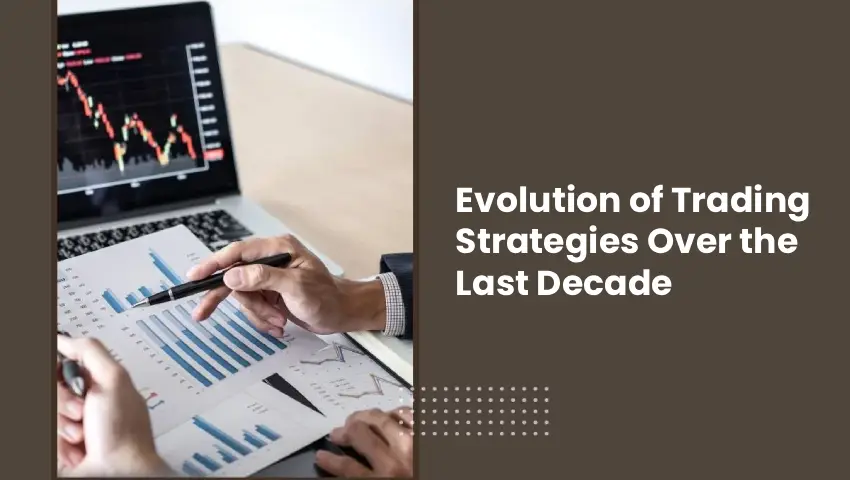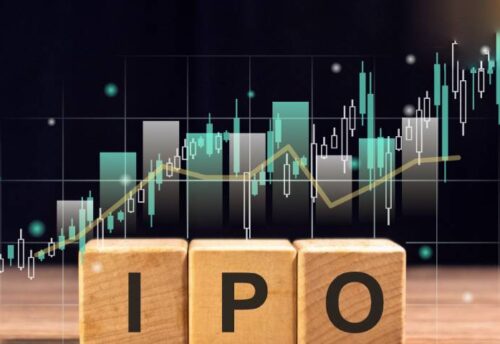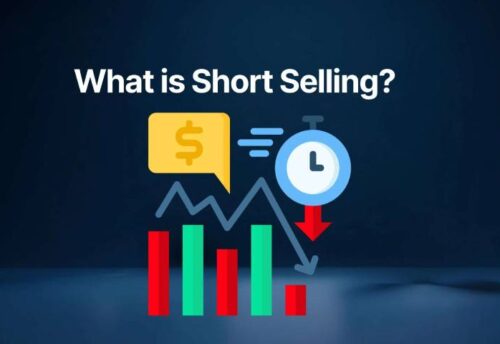
- 27/09/2025
- MyFinanceGyan
- 425 Views
- 6 Likes
- Investment, Share Market
Evolution of Trading Strategies Over the Last Decade
The last decade has been nothing short of revolutionary for the world of trading. From 2015 to 2025, strategies have shifted from manual, discretionary approaches to sophisticated AI-powered systems. Technology, regulation, and changing investor behavior have all shaped the way markets function and how traders make decisions. This blog takes you through the evolution of trading strategies over the past ten years—highlighting key milestones, the role of emerging technologies, challenges, and what the future might hold.
Traditional Trading Strategies in the Early 2010s:
Before the rise of advanced automation, trading largely depended on human judgment and pattern recognition. Common strategies included:
- Swing Trading: Holding positions for days or weeks to capture medium-term trends.
- Momentum Trading: Riding strong price moves supported by volume and sentiment.
- Day Trading: Buying and selling securities within the same day to manage risk.
- Scalping: Profiting from small price changes through frequent trades.
These methods relied heavily on fundamental analysis, technical charts, and market news, with traders manually executing decisions.
The Rise of Electronic and Algorithmic Trading:
The mid-2010s marked a turning point with the widespread adoption of electronic platforms and automation.
Key Developments:
- Rule-based Algorithms: Simple “if-then” logic to capture opportunities quickly.
- Quantitative Models: Statistical and mathematical frameworks to identify edges such as mean reversion.
- High-Frequency Trading (HFT): Advanced systems capable of executing thousands of trades in milliseconds to profit from tiny price discrepancies.
This era saw firms like Citadel and Jump Trading dominate market-making and liquidity provision, reshaping global markets.
Integration of AI and Machine Learning:
The introduction of Artificial Intelligence (AI) and Machine Learning (ML) has been one of the most profound changes in modern trading.
- Adaptive Algorithms: Continuously refine strategies using real-time market feedback.
- Predictive Analytics: Leverage vast datasets—price history, order flow, macroeconomic data, and sentiment—to forecast moves.
- Sentiment Analysis: Natural Language Processing (NLP) evaluates news and social media for market signals.
- Dynamic Risk Management: AI optimizes portfolio diversification, position sizing, and hedging.
Firms such as Two Sigma and D.E. Shaw have been at the forefront, combining traditional quant models with AI innovation.
Popular Trading Strategies in 2025:
Modern trading strategies blend technology, quantitative tools, and human oversight. Some of the most widely used include:
- Day Trading & Scalping: Enhanced by real-time analytics and AI alerts.
- Momentum & Trend Following: Algorithms track persistent movements across multiple markets.
- Mean Reversion & Statistical Arbitrage: Quant models exploit deviations in correlated assets.
- News & Event-Driven Trading: AI automates trades based on company announcements or macroeconomic releases.
- High-Frequency Trading: Continues to capitalize on microprice inefficiencies.
- AI-Driven Market Making: Adaptive algorithms dynamically manage bid-ask spreads.
- Options & Derivatives Strategies: AI forecasts volatility to construct complex hedging strategies.
Technology Driving Modern Trading:
- Cloud Computing: Offers scalable processing power for big data analysis.
- Big Data Analytics: Handles terabytes of structured and unstructured data for actionable insights.
- API-Based Platforms: Provide seamless connectivity, backtesting, and multi-exchange access.
- Blockchain & DeFi: Creating new avenues for decentralized and peer-to-peer trading opportunities.
Regulation and Market Structure:
As strategies evolved, so did regulatory frameworks. Authorities such as SEBI (India) and SEC (US) introduced:
- Approval and testing mechanisms for algorithms.
- Enhanced market surveillance to prevent manipulation (e.g., spoofing).
- Greater transparency in AI-based trading activities.
Meanwhile, the rise of dark pools and fragmented electronic venues has influenced liquidity and execution methods.
Risks and Challenges:
Modern trading isn’t without pitfalls:
- Algorithmic Errors: Rogue code has caused flash crashes in the past.
- Overfitting Risks: AI models may fail under new, unseen conditions.
- Market Manipulation: High-speed strategies can distort fair pricing.
- Regulatory Complexity: Constantly evolving compliance requirements.
- Tech Dependence: Outages or cyberattacks can halt operations instantly.
Successful traders counter these risks with robust testing, risk management, and oversight.
Future Outlook: 2025 and Beyond:
The next decade is likely to bring even deeper integration of advanced technologies into trading:
- Explainable AI (XAI): Making AI decision-making transparent and trustworthy.
- Quantum Computing: Potential to revolutionize risk analysis and optimization.
- Cross-Asset Algorithms: Seamlessly operating across equities, commodities, forex, and crypto.
- Human-AI Collaboration: Traders and machines working together, blending human intuition with machine precision.
The trajectory is clear—trading will become more data-driven, faster, and adaptive than ever before.
Conclusion:
From the manual methods of 2015 to the AI-powered systems of 2025, trading strategies have undergone a seismic transformation. Markets today are more efficient and liquid, but also more complex and technology-dependent. For traders, the key to long-term success lies in:
- Understanding both classical and modern strategies.
- Embracing technology while managing its risks.
- Staying adaptable to evolving regulations and market structures.
As trading continues to evolve, those who remain informed, agile, and disciplined will be best positioned to thrive in this dynamic landscape.
Disclaimer: This blog reflects the author’s personal views and is intended for educational purposes only. It does not constitute financial advice or recommend specific products.



